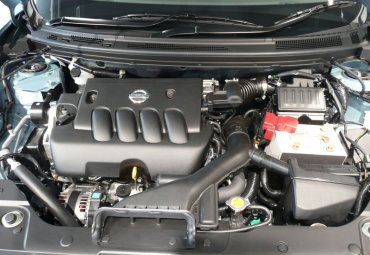
North America may be the home of the American Petroleum Institute, but the organizations next engine oil category, API SN Plus, should also spread to other regions, according to industry insiders. Officials from two lubricant additive companies told Lube Report it only makes sense since small displacement, direct injected and turbocharged engines are also common in Asia-Pacific.
Based on recent meetings, it appears that API licensed products that will protect against low speed pre-ignition (LSPI) are all but final, and official use of the SN Plus designation in the API donut will commence on May 1, 2018. Sources have indicated that at least in North America, SN Plus technology is already in the commercial market and are only awaiting a label change.

Photo: Nissan/WikiCommons
The American Petroleum Institute’s next engine oil category, API SN Plus, is likely to spread to Asia and other regions outside North America, according to industry sources.
With LSPI becoming a bigger concern, it was also clear that original equipment manufacturers could not wait for ILSAC GF-6 to address the problem. The number of engines that use gasoline direct injection and turbocharging is increasing all over the word, so it is not surprising that industry insiders expect use of the new category to spread quite quickly to Asia and other regions outside North America..
Chia Boon Ping, Infineums portfolio and industry liaison manager for Asia-Pacific, stated that interest and penetration of API SN Plus in Asia-Pacific will vary widely region to region, and this will depend on two key factors – the needs of OEMs in Asia-Pacific, as well as the marketing strategy and efforts of oil blenders.
Lubrizols engine oil business manager for China, Junmin Zhao, contended that Asia-Pacific markets are ready for SN Plus, along with other oils that address low-speed pre-ignition.
Lubrizol has worked for the past decade with engine oil formulators and OEMs globally to develop and bring to market a solution for LSPI, Zhao said. Being the first industrial engine oil specification to address LSPI, we believe API SN Plus will penetrate Asia-Pacific very quickly. However, the need for GDI-specific engine oil is not limited to API SN Plus. Wherever there are GDI engines, there is a need for engine oil that meets unique, LSPI mitigating, requirements.
Boon Ping said North American OEMs will be the primary driver for use of SN Plus oils. This is expected to be [the case] in specific Asia-Pacific countries such as China and Australia, where they have a strong presence, he said. Japanese OEMs already have existing fluids and engineering solutions in their market protecting against LSPI in Japan and rest of Asia, while other Asia-based OEMs have yet to place LSPI as their top priority challenge and may be lukewarm on the needs of API SN Plus performance.
Oil marketers in Asia-Pacific may be the main driver in the short term for API SN Plus quality lubricants in the retail segment, but the degree of penetration will depend on their marketing strategy, ability to communicate the value proposition of API SN Plus to consumers and their pricing strategy versus existing API SN products in the market. Overall, lubricant bearing API SN Plus quality is expected to replace at least some of the existing API SN quality lubricant volume now in Asia-Pacific in the short term, but the extent of this replacement at this point is still uncertain.
Lubrizol provided data from 2015 to demonstrate the global penetration of GDI engines, with North America continuing to represent the highest number of GDI engines on the road today. GDI engines, which require increased protection against low-speed, pre-ignition to provide maximum engine efficiency, have gained significant market share in Asia-Pacific, and it is not surprising that the region is interested in LSPI solutions.
Zhao noted that other developers of engine oil specifications are also working to address LSPI. The next ACEA category upgrade [from the European Automobile Manufacturers Association, or ACEA] will likely include a test for LSPI, and European OEMs are already addressing field issues with their own tests.API SN Plus will not satisfy all the performance requirements of European OEMs. Lubrizol is investing in our global product lines to ensure enablement of GDI engines around the world. It is critical that our new products offer the varied performance required by the modern vehicle parc, including GDI engines, even if industry specifications are not in place yet.
Boon Ping added that some automakers are including requirements to address LSPI in their own specifications.
LSPI prevention is a growing trend of wider reach, he said. There are OEM specifications which already include an LSPI-related requirement, such as GMs dexos1 Gen 2, globally launched in 2017, with particular emphasis in North America and China.At the same time, several other OEM specifications with an LSPI-related requirement are either being introduced or considered for future introduction, not just in North America or Asia-Pacific, but also in Europe.
As many engine platforms go global, OEM concerns regarding engine protection become more global too.Thus, mitigation strategies are likely to become increasingly common across regions. He agreed that ACEA will probably include LSPI protection in its next update of its light-duty sequences, most likely by incorporating the ASTM LSPI test.
Its apparent that the additive companies have provided industry with solutions to solve LSPI concerns for OEMs. Now its up to the OEMs to specify the new products and marketers to make them available. This will enable the next generation of fuel efficient, downsized, high performance engines, which will provide significant benefits to the environment without any sacrifice in performance.